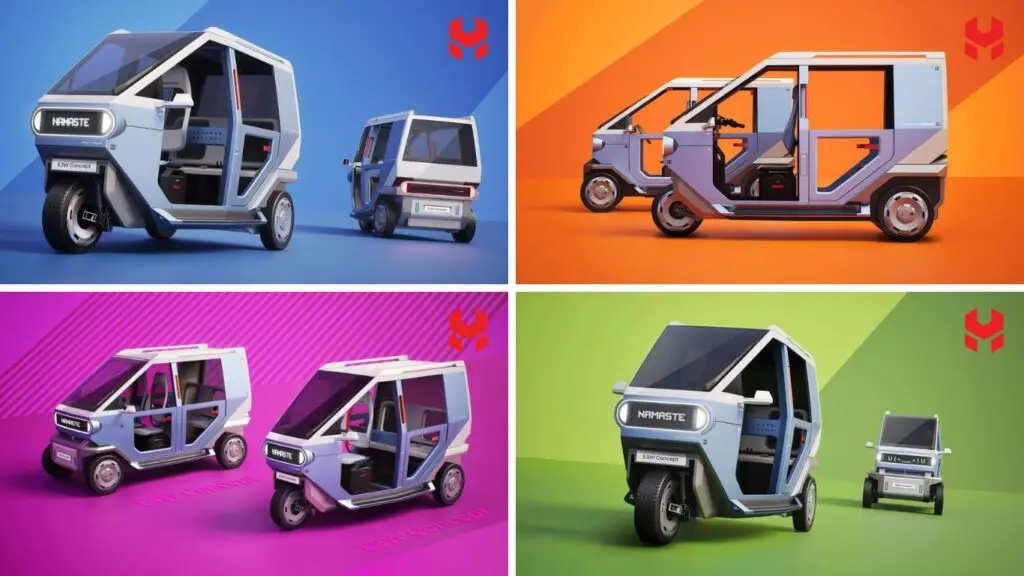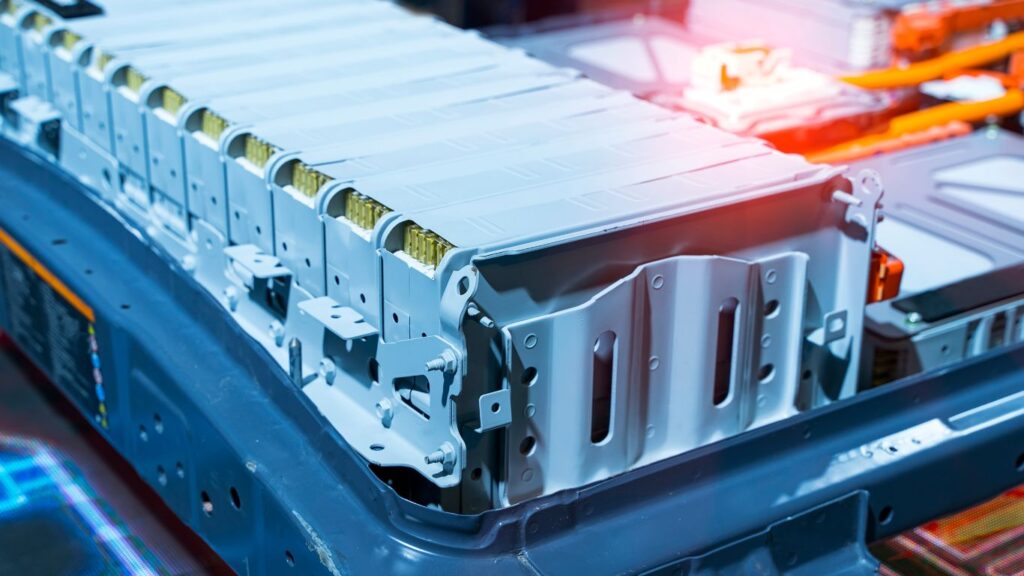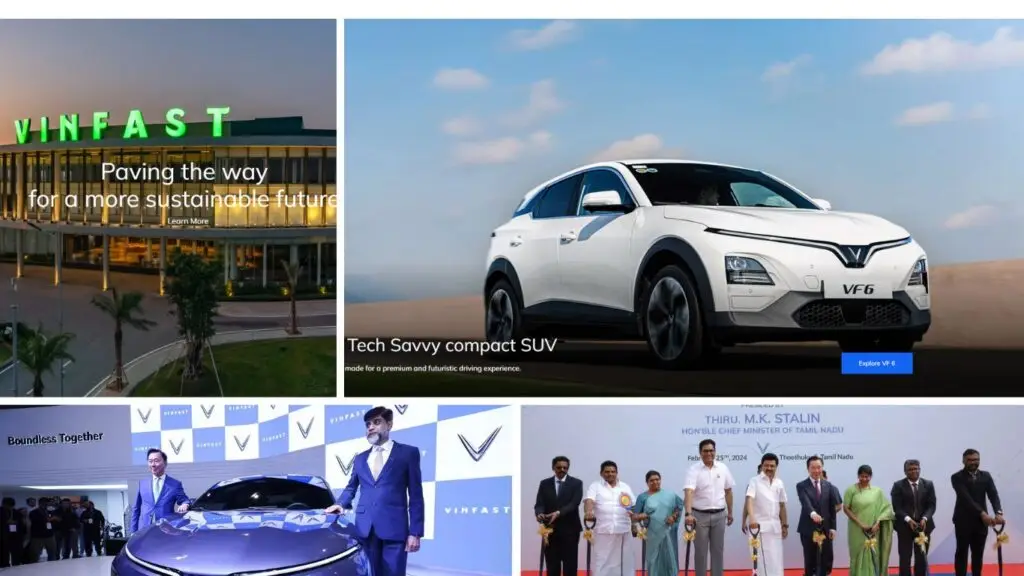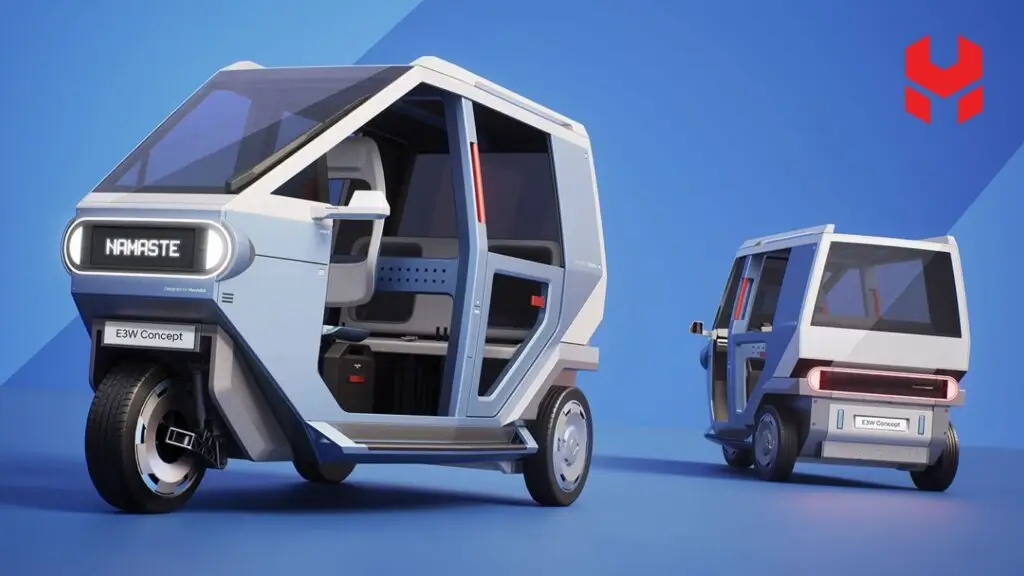
The Hyundai-TVS E3W: A Desi Innovation with Global Roots
Hyundai, a South Korean auto giant, and TVS, a homegrown two-wheeler titan, have joined forces to patent an electric three-wheeler designed for India’s unique last-mile needs. Showcased as the E3W concept at Bharat Mobility Global Expo 2025, this vehicle reimagines the iconic Indian auto-rickshaw as a versatile, eco-friendly workhorse. While no binding agreements are finalized, Hyundai is set to lead design, engineering, and technology, with TVS handling manufacturing, marketing, and co-development.
The E3W patent signals a commitment to local production, with plans to roll out these vehicles in India while exploring global export potential. Priced to compete with existing players like Mahindra and Bajaj, the E3W could hit the market by late 2025 or early 2026, offering a sustainable alternative for passenger transport, logistics, and even emergency response.
Why It’s Special: This isn’t just another rickshaw. The E3W is a modular marvel, blending Hyundai’s global design expertise with TVS’s deep understanding of India’s roads, making it a true “Made for Bharat” solution.
Features That Redefine Last-Mile Mobility
The Hyundai-TVS E3W is packed with innovative features tailored for India’s chaotic urban and rural landscapes. Here’s what makes it stand out:
Modular Design for Versatility
The E3W can transform from a passenger rickshaw to a cargo carrier or even a rapid-response emergency vehicle. With foldable rear seats, it accommodates wheelchair users, championing inclusivity for India’s diverse commuters. Need to deliver goods in Hyderabad’s Old City? The back can become trunk space for packages.Built for Indian Roads
Adjustable Height: The vehicle’s body can be raised to navigate waterlogged streets during monsoons, a game-changer for cities like Mumbai or Chennai.
Large Tyres: Designed for rough terrains, ensuring smooth rides on potholed roads in Bihar or rocky paths in Rajasthan.
Angled Windshield: Offers enhanced visibility and collision protection, perfect for dodging traffic in Delhi’s Chandni Chowk.
Eco-Friendly and Ergonomic
Powered by an electric motor (exact battery specs TBD), the E3W promises zero emissions, aligning with India’s 2030 EV goals. Its flat floor and extended wheelbase maximize driver comfort, while heat-reducing gloss black roof paint and water-resistant interiors tackle India’s scorching summers and heavy rains.Smart and Connected
The E3W features a slim cluster display, a dedicated phone holder, and pegboard-inspired panels for customizable storage. A front screen can display text for navigation or branding, making it ideal for small businesses in Ahmedabad or Kochi.
Desi Touch: Painted in “Aakaashi Blue,” inspired by the Indian Ocean and sky, the E3W reflects India’s boundless aspirations while blending style with practicality.
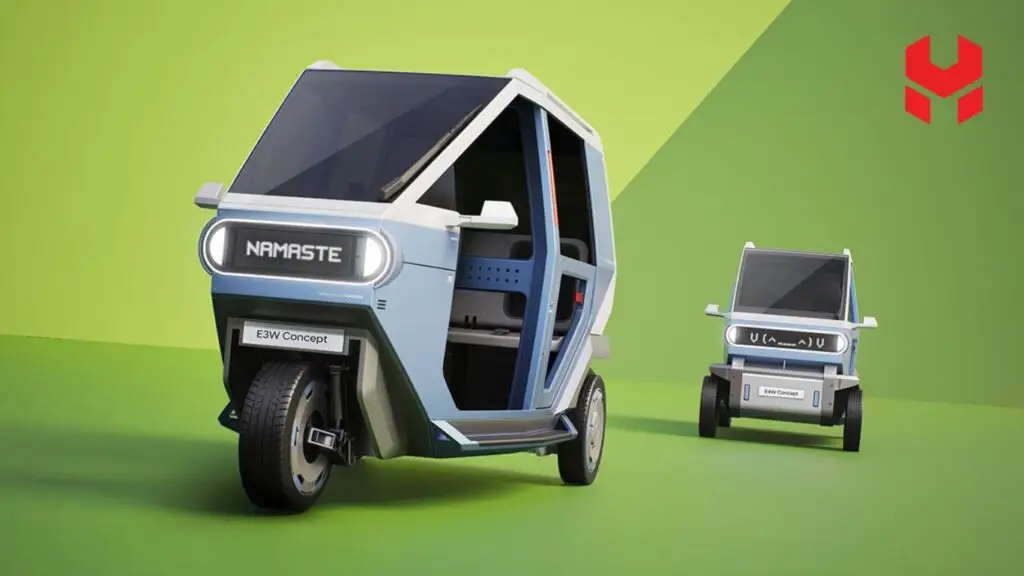
Why This Patent Matters for India
India’s three-wheeler market is booming, with 631,855 units sold from January to November 2024, half of them electric. The segment is led by Mahindra (40% share), with Bajaj, Piaggio, and startups like Euler Motors vying for dominance. The Hyundai-TVS E3W patent shakes up this space with its futuristic design and strategic partnership.
Here’s why it’s a big deal:
Affordable Sustainability
By leveraging TVS’s local manufacturing expertise, the E3W could be priced competitively (est. ₹3–5 lakh), making it accessible for rickshaw drivers and small vendors in Tier-2 cities like Patna or Bhopal. Lower running costs compared to petrol or CNG rickshaws will boost livelihoods.Economic Impact
Local production in Tamil Nadu or other hubs could create thousands of jobs, from assembly to supply chain roles, echoing Tamil Nadu’s rise as an EV manufacturing powerhouse (think VinFast’s Thoothukudi plant).Urban and Rural Reach
The E3W’s compact size and maneuverability make it ideal for navigating narrow streets in Jaipur’s walled city or delivering goods in rural Odisha. Its versatility could bridge urban-rural connectivity gaps.Challenging the Status Quo
Unlike the “same-same” designs of current E3Ws, Hyundai’s futuristic styling and TVS’s market know-how could disrupt Bajaj’s 66% ICE three-wheeler dominance and push startups to innovate.
Fun Fact: The E3W’s towing hook allows quick recovery from potholes—a nod to India’s unpredictable roads
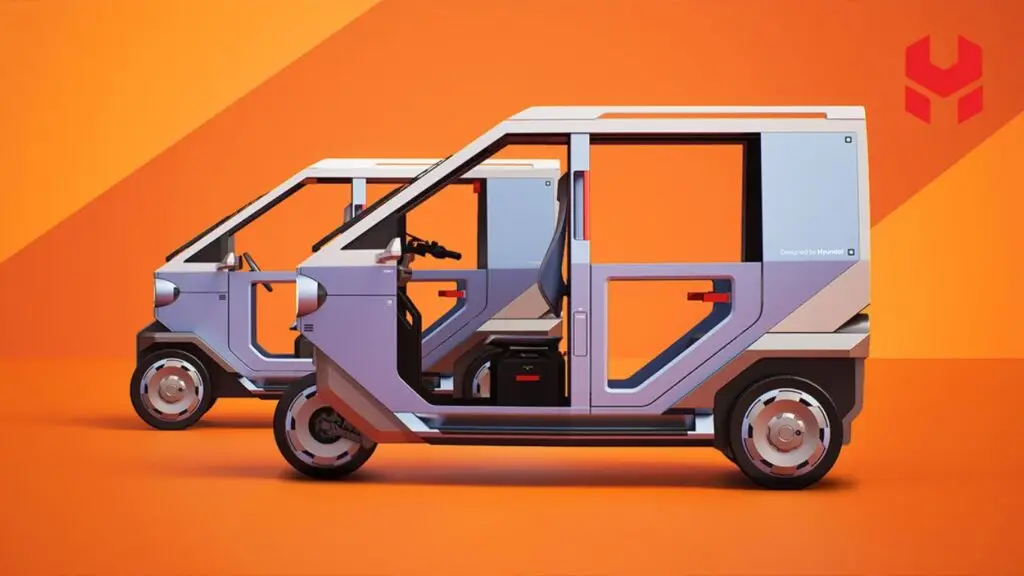
The Bigger Picture: Hyundai’s Vision for India
Hyundai’s E3W patent is part of a broader push to “be more Indian in India.” The company is exploring an app-based ride-pooling platform like Shucle (launched in South Korea in 2021) to complement the E3W, offering real-time routing for shared rides in cities like Bengaluru or Lucknow. This could rival Ola’s mobility solutions while boosting EV adoption.
The partnership with TVS also hints at a micro four-wheeler (E4W) concept, though it’s still under review for global markets. If realized, it could spawn compact EVs for urban logistics, competing with quadricycles like Bajaj’s Qute.
Cultural Connect: The E3W’s modular design mirrors India’s jugaad spirit—adapting to any challenge, whether it’s ferrying passengers during Diwali or delivering essentials in a monsoon-soaked village.
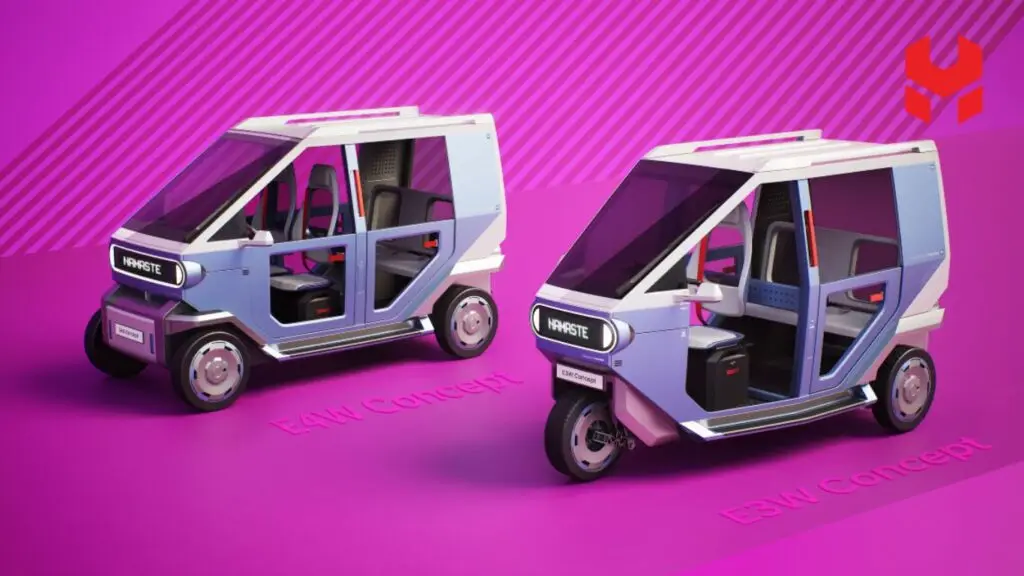
Challenges to Overcome
While the E3W patent is exciting, there are hurdles:
Charging Infrastructure: India’s 700,000+ E3W sales in 2024 highlight demand, but charging stations remain scarce outside metros. Hyundai and TVS must partner with firms like ChargeZone to scale up.
Market Competition: Mahindra and Bajaj’s established networks and lower-priced models pose a threat. The E3W’s premium features must justify its cost.
Consumer Adoption: The futuristic design may polarize traditional rickshaw drivers in smaller towns. Awareness campaigns and financing options will be key.
Production Timeline: With no binding agreements yet, delays could push the launch beyond 2026, giving competitors an edge.

